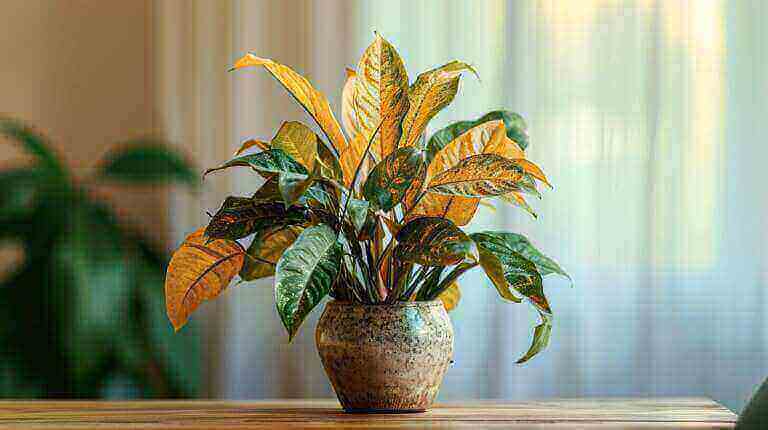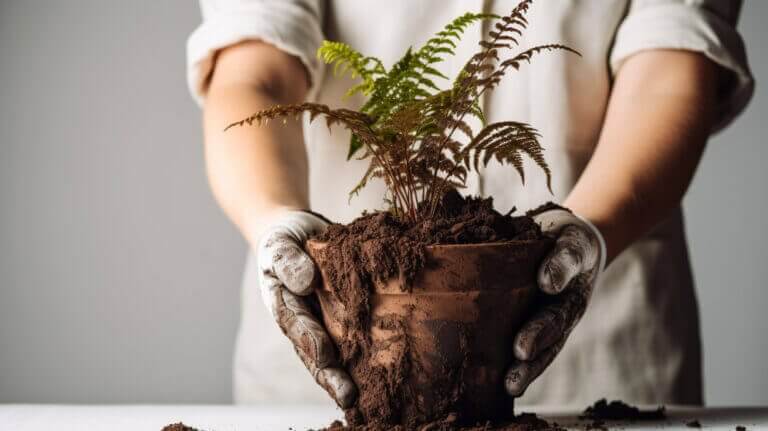Are you eager to learn how to propagate dracaena plants through stem cuttings and nurture your own indoor jungle? This beginner’s guide will provide you with a step-by-step process to successfully propagate your dracaena and enhance your houseplant collection.
Key Takeaways:
- Dracaena plants can be easily propagated from stem cuttings.
- Choose a mature, healthy plant and take 4-6 inch cuttings with leaves and nodes.
- Rooting powder can be used to promote root growth on the cut end of the stem.
- Stem cuttings can be placed in water or planted directly in well-draining soil.
- Keep the cuttings in a brightly lit area, away from direct sunlight.
- Water the cuttings only when the soil is dry, being careful not to overwater.
- Within a few weeks, roots should develop, and the new plants can be potted in their own containers.
- Other propagation methods for dracaena include dividing offsets, air layering, and growing from seeds.
- Care for young dracaena plants by providing bright, indirect light, consistent moisture, moderate humidity, appropriate temperatures, and regular fertilization.
How to Take Stem Cuttings for Dracaena Propagation
Taking stem cuttings is one of the easiest ways to propagate dracaena plants. To ensure successful propagation, it is important to choose the right length and condition for your cuttings, as well as to identify the nodes and leaves that will promote root growth. Popular varieties for this method include dracaena marginata and dracaena fragrans.
When selecting stem cuttings, opt for mature and healthy plants with strong stems. The cuttings should be around 4-6 inches long, with at least a few leaves and nodes. Nodes are the small bumps or joints on the stem where roots will develop. Leaves are essential for photosynthesis, so make sure each cutting has a few healthy ones.
Dip the cut end of the stem in rooting powder, if desired, to enhance root growth. While not necessary, rooting powder can give your cuttings an extra boost. It contains hormones that encourage root development. However, if you prefer a more natural approach, you can skip this step and still achieve successful propagation.
Once your cuttings are prepared, you can choose between two methods: placing them in water or planting them directly in well-draining soil. Both methods have their advantages. When using water, ensure that the nodes are submerged, and change the water every few days to prevent stagnation. If you decide to plant the cuttings in soil, use a well-draining mix to avoid waterlogging, as excessive moisture can hinder root development.
| Advantages of Water Method | Advantages of Soil Method |
|---|---|
|
|
Regardless of the method chosen, it’s crucial to provide bright but indirect light for the cuttings. Placing them in direct sunlight can lead to leaf burn. A brightly lit area in your home, away from windows with intense sunlight, is ideal. Keep the cuttings warm, in a temperature range of 65-75°F (18-24°C), as colder temperatures can slow down root growth.
As the cuttings develop roots, which usually takes a few weeks, monitor the soil moisture if you chose the soil method. Water the cuttings only when the soil is dry to the touch, as overwatering can cause root rot. Once the roots are several inches long, the new plants can be potted in their own containers, using well-draining soil.
Propagating Dracaena Through Stem Cuttings in Water or Soil
Once you have taken your stem cuttings, you have the option to propagate them in water or soil. Both methods have their advantages, and it’s important to understand the steps involved in each. Whether you choose to place your cuttings in water or plant them directly in well-draining soil, providing the right conditions for root growth is key.
- Propagating in Water: This method is simple and allows you to observe root development. To begin, fill a glass or jar with water and place the stem cutting inside, making sure that the nodes are submerged. Position the container in a brightly lit area, away from direct sunlight. Change the water every few days to prevent stagnation and maintain oxygen levels. After a few weeks, you should start to see roots emerging from the nodes. Once the roots are several inches long, you can transfer the cutting to a pot with well-draining soil.
- Propagating in Soil: If you prefer to bypass the water stage, you can plant your stem cutting directly in well-draining soil. Prepare a pot with a mixture of equal parts potting soil and perlite or sand for optimal drainage. Insert the cutting into the soil, ensuring that the nodes are covered and the cutting stands upright. Place the pot in a bright location with indirect sunlight. Water the soil lightly, only when it becomes dry, to avoid overwatering. As the roots develop, you will notice new growth above the soil. Once the roots are well established, you can repot the plant into individual containers.
Remember to keep a watchful eye on your cuttings, regardless of the propagation method you choose. Adequate moisture, light, and proper drainage are crucial for successful root development. Patience is key during this process, as it can take several weeks for roots to form. With time and care, your stem cuttings will transform into healthy, thriving dracaena plants.
| Advantages of Water Propagation | Advantages of Soil Propagation |
|---|---|
| Allows easy observation of root development | Roots develop directly in the soil, mimicking the plant’s natural growth pattern |
| No need to worry about soil composition or drainage | Plants establish a stronger root system before transplantation |
| Less risk of overwatering | Roots have direct access to nutrients in the soil |
Expert Tip: Rooting Hormone
Using a rooting hormone can enhance the success rate of propagation. Simply dip the cut end of the stem cutting in rooting powder before planting it in water or soil. The rooting hormone helps stimulate root growth and increases the chances of successful propagation.
Experiment with both water and soil propagation methods to find the one that suits you best. Some gardeners prefer the simplicity of water propagation, while others enjoy the hands-on approach of planting directly in soil. Whichever method you choose, remember to provide your cuttings with the necessary care and attention for optimal root growth. Before you know it, you’ll have a collection of beautiful dracaena plants to transform your indoor space into a lush green jungle.
Caring for Newly Propagated Dracaena Plants
Once your cuttings have developed roots and are ready to be potted, it’s important to provide proper care for your newly propagated dracaena plants. This includes ensuring they receive the right amount of light, moisture, humidity, and nutrients to support healthy growth.
First and foremost, dracaena plants require bright but indirect light. Place them near a window where they can receive several hours of filtered sunlight each day. Direct sunlight can scorch their leaves, so it’s best to avoid placing them in harsh, full sun exposure.
Consistent moisture is essential for dracaena plants. However, it’s important not to overwater them as it can lead to root rot. Allow the top inch of the soil to dry out between waterings, and then thoroughly water the plant, ensuring the excess water drains out of the pot. Good drainage is crucial to prevent waterlogged soil.
Dracaena plants thrive in moderate humidity levels. If the air in your home is dry, it’s beneficial to increase humidity around the plants. You can place a tray filled with water and pebbles near the plants or use a humidifier to create a more humid environment.
Appropriate temperatures are also important for the health of dracaena plants. They prefer temperatures between 65-75°F (18-24°C) during the day and slightly cooler temperatures at night. Avoid exposing them to cold drafts or extreme temperature fluctuations.
To ensure your newly propagated dracaena plants receive the necessary nutrients, regular fertilization is recommended. Use a balanced liquid fertilizer diluted to half strength and apply it every 4-6 weeks during the growing season (spring and summer). Follow the instructions on the fertilizer package for proper application.
| Light: | Bright, indirect light |
|---|---|
| Moisture: | Allow top inch of soil to dry between waterings |
| Humidity: | Moderate humidity levels |
| Temperature: | 65-75°F (18-24°C) during the day, slightly cooler at night |
| Fertilization: | Apply balanced liquid fertilizer every 4-6 weeks during growing season |
Other Methods of Dracaena Propagation
While stem cuttings are the most common method of propagating dracaena plants, there are other techniques worth exploring. Dividing offsets, air layering, and growing from seeds offer alternative ways to expand your dracaena collection.
Dividing offsets: This method involves separating the young plantlets, known as offsets, that grow from the base of the mother plant. Carefully remove the offsets, ensuring they have their own roots and stems. Plant them in separate containers with well-draining soil, and provide the same care as you would for mature dracaena plants. Dividing offsets is an excellent way to multiply your dracaena collection and create new individual plants.
Air layering: Air layering is a technique commonly used for plants with difficult-to-root stems, such as dracaena. This method involves making a small cut or removing a small section of the stem’s outer layer, then applying rooting hormone to encourage root growth. Wrap the wounded area with damp sphagnum moss, and cover it with plastic to create a humid environment. Over time, roots will form at the wounded section, and you can cut the new plantlet from the mother plant and pot it separately.
Growing from seeds: If you’re looking for a challenging but rewarding propagation method, growing dracaena from seeds is an option to consider. Collect mature seeds from the mother plant and sow them in well-draining soil. Keep the soil moist, and provide bright, indirect light. Germination can be slow, taking several weeks or even months. Once the seedlings have developed a few leaves and are sturdy enough, transplant them into individual containers.
| Propagation Method | Advantages | Considerations |
|---|---|---|
| Dividing Offsets | – Easy and reliable method – Creates multiple plants – Ideal for expanding a dracaena collection | – Requires mature dracaena with offsets – Careful handling to ensure each offset has roots and stems |
| Air Layering | – Suitable for difficult-to-root dracaena stems – Produces well-rooted plants – Can be done without removing the entire stem | – Requires precise cutting and application of rooting hormone – Takes longer than stem cuttings to produce new plants |
| Growing from Seeds | – Provides a challenging and rewarding propagation experience – Allows for a wider variety of dracaena species and hybrids | – Germination can be slow and unpredictable – Requires proper soil, moisture, and light conditions |
Frequently Asked Questions About Propagating Dracaena Through Stem Cuttings
Curious about the ins and outs of propagating dracaena through stem cuttings? Here are answers to some commonly asked questions related to the propagation process, managing a dracaena collection, and the stem cutting method.
How do I choose the right plant for stem cuttings?
When selecting a dracaena plant for propagation, look for one that is mature and healthy. This will ensure that the stem cuttings have the best chance of success. Choose cuttings that are 4-6 inches long and have a few leaves and nodes. These nodes are essential for root development.
Should I use rooting powder?
Using rooting powder is optional but can increase the chances of successful root development. Simply dip the cut end of the stem in rooting powder before planting it in water or soil. The rooting powder contains hormones that stimulate root growth.
How do I care for the stem cuttings?
Once the stem cuttings are planted in water or soil, place them in a brightly lit area, but away from direct sunlight. This will provide the optimal conditions for root development. Water the cuttings only when the soil is dry to avoid overwatering. Within a few weeks, roots should begin to develop, and once they are several inches long, the new plants can be potted in their own containers.
Are there other methods of propagating dracaena?
Apart from stem cuttings, dracaena can also be propagated through methods such as dividing offsets, air layering, and growing from seeds. Dividing offsets involves separating the smaller plants that grow at the base of the parent plant. Air layering involves creating a wound on the stem and encouraging roots to form before detaching the new plant. Growing from seeds is a longer process but allows for a wider variety of dracaena species.
Now that you have the answers to some frequently asked questions, you are ready to embark on your journey of propagating dracaena through stem cuttings. With proper care and patience, you can expand your dracaena collection and create a thriving indoor jungle.






